The Collaborations Fueling Innovation
At Saint Louis University School of Medicine, collaborations between departments and across disciplines drive new discoveries and foster key partnerships.
With a unique consortium of institutes and centers—from bioinformatics and place-based medicine to vaccine research and drug development—researchers at the School of Medicine leverage multidisciplinary expertise and ensure their contributions to science and medicine has an even greater impact on the world.
Making A Difference Through Data
Clinical medicine and research have traditionally existed without interdisciplinary collaboration. However, the SLU Advanced Health Data (AHEAD) Research Institute seeks to change that very philosophy—and bring together clinical experts and researchers from various fields.
“Our goal is to foster collaboration and respect across disparate groups that normally wouldn’t work together,” says Leslie Hinyard, Ph.D., M.S.W, executive director of the AHEAD Institute, and associate professor.
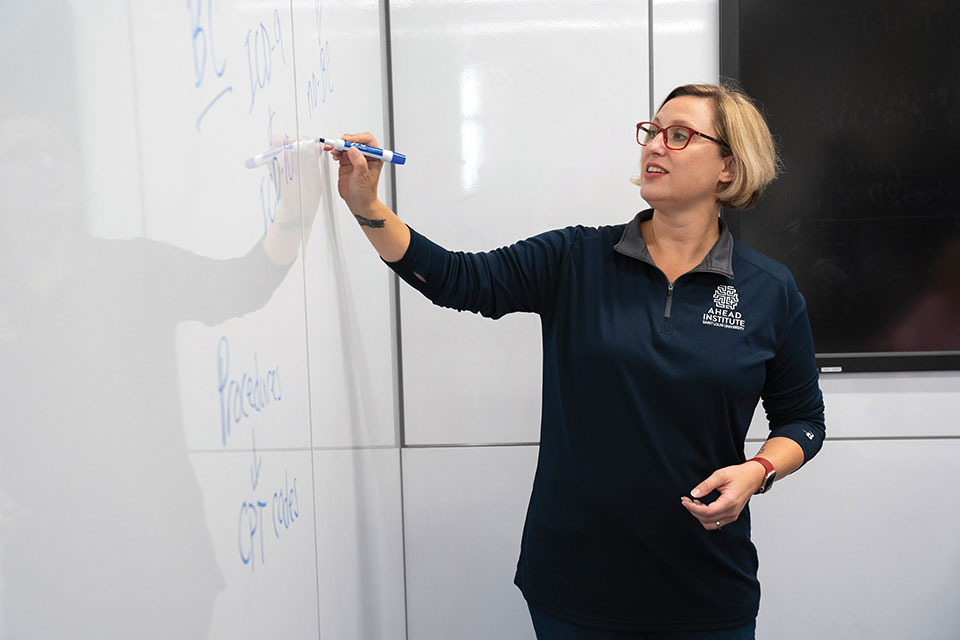
At AHEAD, Hinyard and her team serve as collaborators, helping researchers and clinicians locate the data they need, troubleshoot their projects, and move through the research process. “A lot of faculty, residents, and medical students have great ideas—but they don’t know how to take that idea all the way,” shares Hinyard. “We say, ‘Okay, you’ve got this great, clinically relevant question. How can I help you answer it?’”
One potential path is leveraging AHEAD’s Virtual Data Warehouse (VDW), which includes de-identified patient data from more than five million SSM Health and SLUCare patients. “The exciting part about this is not just that we have this data—but we also created a standardized data model, which means that all of our variables are research-ready,” says Hinyard. “This resource is the cornerstone of the AHEAD Institute.”
In the coming years, Hinyard is excited to see how cross-collaborations can strengthen SLU as a leader in research. “AHEAD allows us to create great partnerships and work together to improve these problems in an interdisciplinary capacity,” she says.
Expanding a New Field
With the launch of the SLU Taylor Geospatial Institute (TGI) in April 2022, SLU is poised to become a national leader in geospatial science and technology. Housed at SLU and comprised of eight independent research institutes, TGI connects faculty and students from various disciplines to accelerate research and innovation in the emerging field of geospatial science.
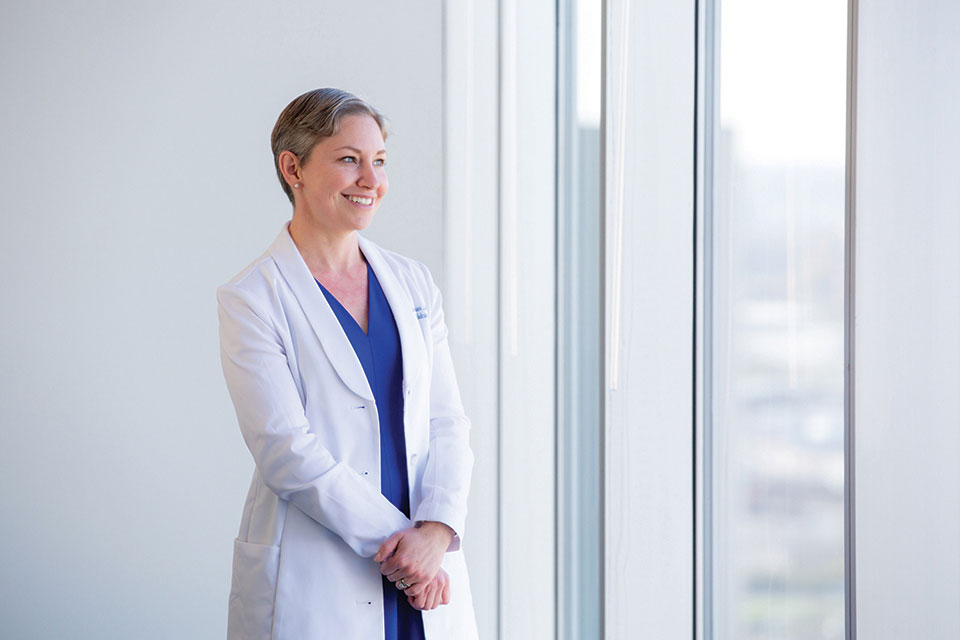
For Sarah Gebauer, M.D., M.S.P.H., assistant professor of family and community medicine, the impact of “place or location” on a person’s health has been a focus throughout her career—and she’s now leveraging the TGI to support her newest research project.
In April 2022, Dr. Gebauer received a K23 grant from the National Institute of Arthritis and Musculoskeletal and Skin Diseases to bring geospatial information science and administrative electronic medical record data together. The five-year grant will provide Gebauer with the resources to explore how knee osteoarthritis and barriers to low-cost interventions impact patients. “I’m interested in neighborhoods and how they affect people’s health,” Gebauer says.
“Millions of Americans have knee osteoarthritis, and unfortunately, the prevalence of it is increasing,” shares Gebauer. “Because walking and exercise are the best things you can do, how can I help someone leverage their neighborhood and the resources they have to control their symptoms?”
Although the project is still in its infancy, Gebauer is anticipating the insights and expertise she can access through the TGI, particularly Geospatial Information Science (GISc). Eventually, Gebauer hopes her research can spark transformational change—from a policy, public health, and urban design perspective—while also creating new ways to support individuals with knee osteoarthritis.
“You don’t often get physicians talking with urban planners,” Gebauer says. “With the Taylor Geospatial Institute, you get this amazing chance to collaborate with other fields that really have not been in the same place at the same time before.”
Discovering Life-Saving Drugs
At the SLU Institute for Drug and Biotherapeutic Innovation (SLU-IDBI), multidisciplinary collaboration guides researchers in developing life-changing medications and biomedical devices. Launched in the spring of 2021, the SLU-IDBI brings together investigators in disciplines of medicine, biology, engineering, and computational and applied chemistry.
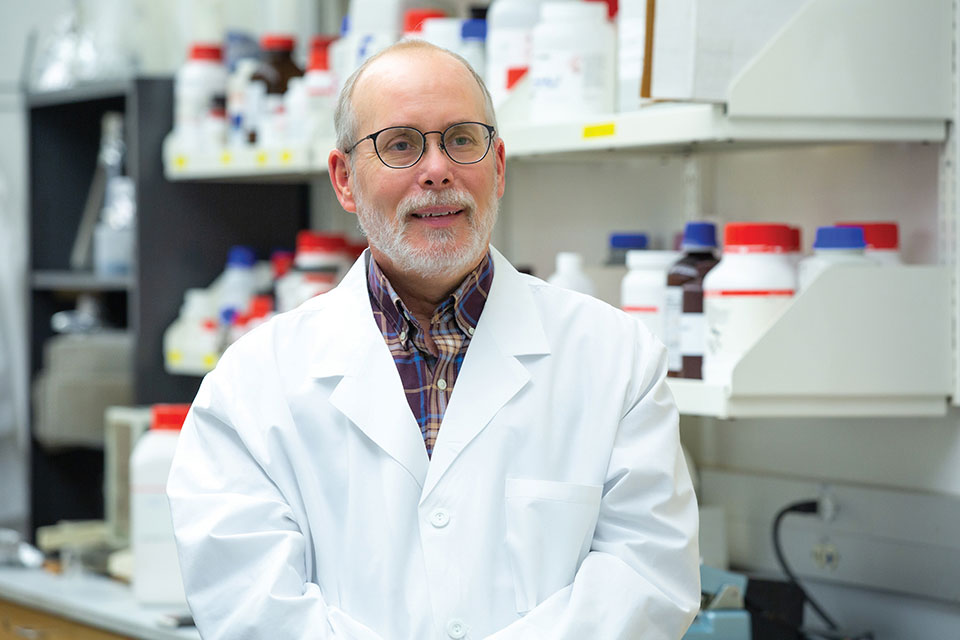
As director of the SLU-IDBI, John Tavis, Ph.D., professor of molecular microbiology and immunology, is passionate about the Institute’s role in helping scientists learn about translational research—a skill not often taught in school. “We provide training on how to do drug discovery,” says Dr. Tavis. “It is a very different type of science than mechanism-based science, so we give guidance on their experiments.”
With approximately 140 members in the SLU-IDBI, the potential impact on public health is extensive. Members have launched startups and companies, obtained patents, and secured more than $37 million in drug-discovery grant funding. Current research at the SLU-IDBI includes the discovery and development of therapies for cancer, chronic pain, central nervous system disorders, liver disease, hepatitis B, tuberculosis, and a variety of genetic diseases.
“To have the opportunity to materially impact the life of someone who is suffering from an illness is transformational,” says Tavis. “There’s been an enormous amount of enthusiasm among the faculty. People are excited about adding a new dimension to their research.”
Tavis himself has nearly three decades of experience in virology and a deep understanding of how medicine has evolved: “If you take a step back and look at the overall progression of medical care in the United States since World War II, it is a story of fusion—of cutting-edge science and gifted insight that can be applied toward medicine,” says Tavis.
Tavis sees the SLU-IDBI as a step towards exemplifying SLU’s mission of pursuing truth and serving humanity—while propelling discovery and providing hope to those who are suffering. “This shared mission across the entire biomedical spectrum is something I find very important,” Tavis says. “That synergy is advancing the field and we will continue to see a big impact—not only today but also throughout the next decade.”
Bringing Metabolic and Nutrition Innovation to the Midwest
Wing-Kin Syn, M.D., Ph.D., director of the Division of Gastroenterology and Hepatology, and co-director of the SLU Liver Center, is striving toward a new milestone. Together with Ajay Jain, M.D., associate director of pediatric gastreonterology and hepatology in the Department of Internal Medicine, Dr. Syn is leading the development of a new Metabolic & Nutrition Institute in the School of Medicine — an Institute that aims to bring together researchers, educationists, policy, and community leaders, as well as health care providers. The goal of the institute is to better understand and identify factors associated with the development and progression of metabolic conditions such as type 2 diabetes mellitus, heart and vascular disease, hypertension, fatty liver disease, obstructive sleep apnea, nutrition, and weight disorders, and to address health disparities and food insecurity common among these conditions.
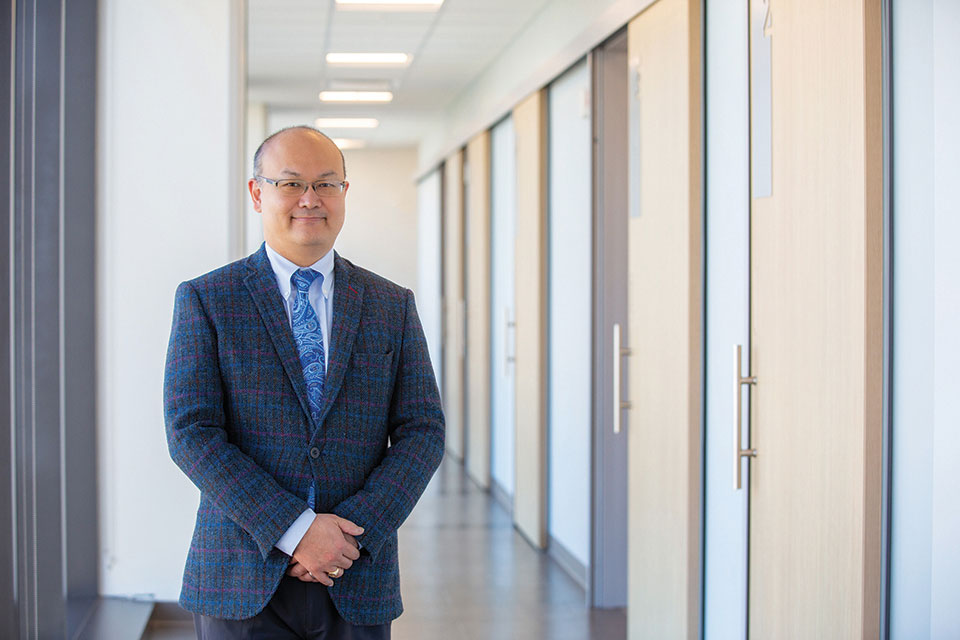
“The Metabolic and Nutrition Institute will be the first in the Midwest to focus on these conditions,” says Syn. To make the institute a reality, collaboration is key — there will be involvement of stakeholders from the Center of Health Law, College of Public Health & Social Justice, College of Health Sciences, College of Arts & Sciences, SLU Taylor Geospatial Institute, as well as various Departments from the School of Medicine. The Metabolic & Nutrition Institute will also work collaboratively with the SSM – SLU Metabolic, Liver & Weight Loss Program / Center that provides a cost effective ‘one-stop shop’ multidisciplinary care to patients with multiple metabolic health conditions.
This new initiative will deepen SLU’s impact on public health and society at large and will create transformative advancements to health care.
The Future of Vaccine Research
For decades, the School of Medicine has been at the forefront of vaccine development. SLU researchers have extensive experience developing vaccines and treatments for infectious diseases and have been on the forefront of protecting the public from bioterrorism and other emergent threats, including pandemic influenza, smallpox, tularemia, anthrax, tuberculosis and plague.
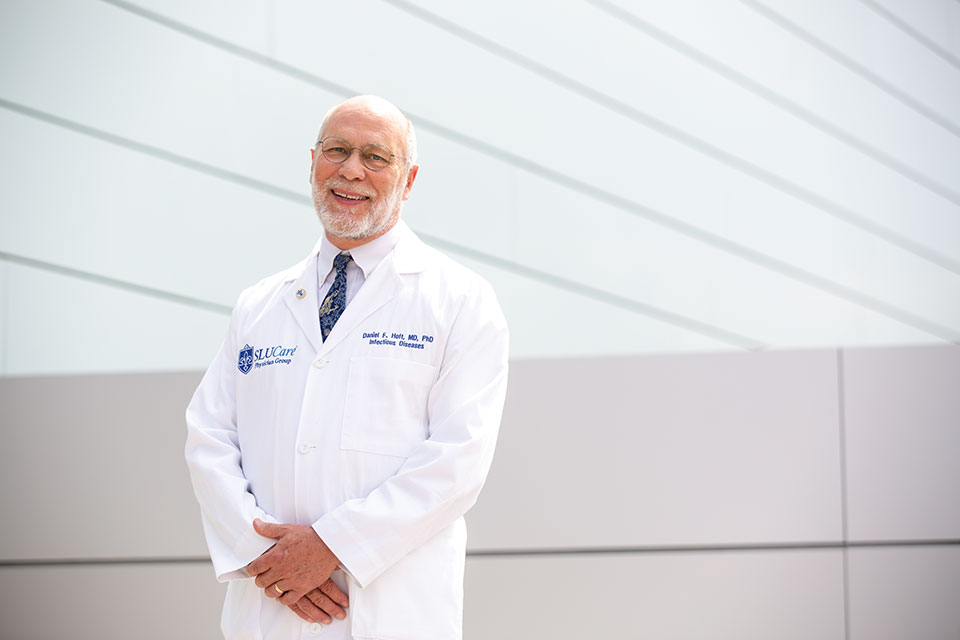
Recognized as a leader in this field, SLU is one of only 10 Vaccine and Treatment Evaluations Units (VTEUs) around the county and has been for the past 33 years. Daniel Hoft, M.D., Ph.D., director of SLU’s Center for Vaccine Development, director of the Division of Infectious Disease, Allergy and Immunology, is also the principal investigator of SLU’s VTEU. “SLU’s Center for Vaccine Development is internationally recognized as a leader in the development of vaccines—from the bench to clinic,” Dr. Hoft says. “We have incredible potential to revolutionize many fields of medicine.”
A New Frontier
For Hoft, the idea of creating an interdisciplinary institute focused on vaccine development and deployment has always intrigued him. But it wasn’t until 2020 that this vision became a reality, thanks to a donation from Stephen C. Peiper, M.D. and Zi-Xuan “Zoe” Wang, Ph.D. The Stephen C. Peiper and Zi-Xuan Wang Institute for Vaccine Science and Policy (Peiper-Wang Institute), is exploring new frontiers as the region’s center of excellence for vaccine development and evaluation.
By unifying researchers from different departments across the university, the Peiper-Wang Institute bolsters the possibilities of new breakthroughs. “Bringing these groups together has been fascinating (a dream come true),” says Hoft. “This collaboration makes it possible for us to put our strengths together and work on things that we couldn’t do alone.”
Beyond our Community
In time, Hoft hopes the Peiper-Wang Institute will become a national and international resource for scientists and researchers developing vaccines. “We are trying to bring the vaccines forward from the pre-clinical space into the clinical trial space,” Hoft says. “We haven’t done that from scratch to end yet, but we’ve had several vaccine projects transition from the pre-clinical to clinical research space.”
As the collaboration among Hoft, the Center for Vaccine Development, and the Peiper-Wang Institute forge ahead with vaccine development, Hoft understands staying agile and proactive is the only way to save lives. “Just making vaccines that work for one pandemic doesn’t mean we’re done,” he says. “We have to keep doing this work and stay ahead of nature. We feel privileged to be here, making a profound contribution during this unparalleled time.”
We have incredible potential to revolutionize many fields of medicine.” - Daniel Hoft, M.D., Ph.D.
